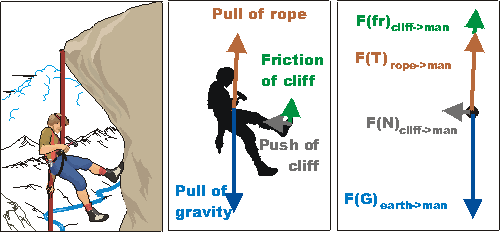

| Force | Symbol | Magnitude | Direction |
| Gravity (weight) | F(G) | = mobject*g (9.8 m/s2) | Downward |
| Normal (surface) | F(N) | any (up to breaking load) | perpendicular to surface |
| Tension | F(T) | any (up to breaking load) | along string/rope/chain |
| Friction | F(fr) | not slipping: between zero and ms*F(N)
slipping: = mk*F(N) |
Direction opposing motion. |